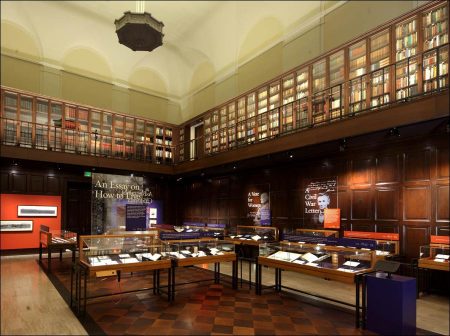Library service long has been a means of stimulating cultural and educational growth in this area. As early as 1878, the residents of the City of Los Angeles founded a municipal library. As population increased elsewhere in the county, libraries were organized in other communities. At the present time, each of twenty-four separate units of government maintains independent library service.
Twenty-two of these units are cities; one is a special district set up specifically for this purpose and containing a city and its adjacent unincorporated territory; and the remaining unit is Los Angeles County. This latter jurisdiction furnishes library facilities to the twenty-two other cities of the county, one special library district composed entirely of unincorporated territory, and all of the remaining unincorporated territory of the county.
The County Library System
The Los Angeles County Public Library is the largest of these systems in terms of the area and number of communities served. It is administered as a department of the county government under the general supervision of the Board of Supervisors. It is headed by a County Librarian who is appointed by and responsible to the board. The library finances its activities in two ways. It receives the bulk of its revenue through a special tax on all taxable property within the areas it serves, except two of the cities and the special district. These latter three jurisdictions pay the county an agreed amount specified by contract for their county library service.
Library service reaches the people through 128 branches and stations strategically located throughout the county. Books are rotated from one branch to another to make available the greatest possible variety of reading material, no matter how remote the location. A borrower is not limited to using the books on the shelves of his own branch but can order volumes which regularly are held at headquarters or another branch.
In order to reach persons who do not have access to a branch, the library has begun to use mobile libraries or bookmobiles in areas of scattered population. Persons in county and State institutions also can make use of the county library collection. Book collections are maintained at such institutions as General Hospital, Olive View Sanatorium, El Retiro, Juvenile Hall, and Rancho Los Amigos.
The department provides a special library for the use of teachers, this service being financed by the County Superintendent of Schools. Children’s libraries or book sections are maintained at many of the larger branches. Juvenile interest in books is encouraged by story hours, classes at branches and at schools, and reading programs of various sorts.
Adult interest in the literary development of their children is stimulated by talks and courses for parents on use and choice of books. Programs also are carried on specifically for adults. Book reviews, “great book” discussions, surveys of new literature and library facilities, exhibits and displays are all part of this effort to increase knowledge and appreciation of literature.
Entirely independent of the County Public Library is the County Law Library, operated for the county by the Board of Law Library Trustees appointed by the Board of Supervisors. This is a legal reference library mainly for the use of the legal profession but open to the general public.
Municipal Libraries
We have seen that twenty-two cities receive library service from the county rather than maintain libraries of their own. Other cities in the county, with one exception, have chosen to operate independently. The City of Palos Verdes Estates is part of an independent library district which provides library facilities to adjacent unincorporated territory as well.
While the county system is largest in terms of area served, the Los Angeles City Public Library ranks first in terms of the number of persons served. It is the largest municipal library in California and the third largest in the nation. The public library is a department of the city government, coming under the management of the Board of Library Commissioners. The board appoints the City Librarian who is the administrative chief of the department. Funds for the department are made available in several ways, one being a tax levy fixed in the city charter specifically for library purposes. The principal additional source of money is an annual appropriation by the City Council from general city funds.
The City Public Library has a pattern of organization similar to that of the county system. It operates from a central library which has an extensive book collection; each special subject or type of material is housed in a separate department or division. Book service also reaches library-goers through forty branches and fifty stations located throughout the city. The larger branches in particular offer a wide variety of reading material and many special services, including children’s collections and programs.
As in the county system, a borrower at any branch can order books from the main library or other branches. Branch libraries are used as meeting places by public and private organizations for book review discussions, lectures, special exhibits, and other educational presentations. The adult education division of the Los Angeles City Schools carries on extensive activities in library rooms made available for its use.
One of the important special services of the central library is the maintenance of collections for teachers and for school children. A large collection of books and documents on government is provided in the municipal reference department, which has three outlets–the municipal reference library in the City Hall, and divisions in the Water and Power and Public Health Departments. This facility is primarily for the use of city employees, but library privileges are extended to county, State, and federal personnel in the Los Angeles area.
The other independent library jurisdictions within the county operate in much the same manner as does the Los Angeles system. Book collections are, on the whole, less diverse and extensive, and special services are not as numerous. Many of these jurisdictions have reciprocal agreements with other libraries, especially those adjoining. Such arrangements allow registered borrowers from one library free use of the facilities of another, and vice versa. Most of these agreements are maintained with Los Angeles City and County libraries, and these two jurisdictions have a reciprocal agreement of their own.
Views: 162



